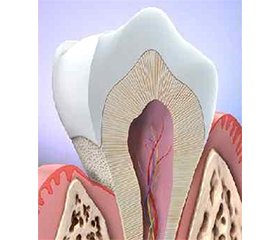Oral and General Health Том 5, №4, 2024
Вернуться к номеру
Склеротичний дентин: фізіологічні та патологічні аспекти його формування
Авторы: Савичук А.О., Паливода І.І., Корнієнко Л.В., Трубка І.О., Савичук Н.О.
Національний університет охорони здоров’я України імені П.Л. Шупика, м. Київ, Україна
Рубрики: Стоматология
Разделы: Справочник специалиста
Версия для печати
Актуальність. Склеротичний дентин формується під впливом вікових змін або у відповідь на патологічні фактори, такі як карієс, ерозія чи механічні пошкодження, включно з наслідками стоматологічного лікування. Ці зміни призводять до зниження еластичності й міцності дентину та його опору до утворення тріщин, що негативно впливає на адгезію реставраційних матеріалів. В умовах зростаючого попиту на довготривалий ефект лікування зубів у старших вікових групах особливо важливо розуміти вплив склеротичного дентину на результати лікування для подальшого вдосконалення протоколів надання стоматологічних послуг. Мета: дослідити структуру та механізми утворення склеротичного дентину, а також його вплив на механічні властивості зубів і ефективність адгезивних реставрацій; оцінити роль цих змін у контексті сучасних клінічних підходів до лікування. Висновки. Склеротичний дентин погіршує механічні властивості зуба, знижуючи його стійкість до навантажень і адгезію композитних матеріалів. Для оптимізації клінічних протоколів потрібні подальші дослідження, спрямовані на поліпшення ефективності реставрацій при лікуванні зубів з такими змінами.
Background. Sclerotic dentin forms as a result of aging or in response to pathological factors such as caries, erosion, or mechanical damage, including the effects of dental treatments. These changes reduce the elasticity and strength of dentin, promoting crack formation, which negatively impacts the adhesion of restorative materials. Given the growing demand for long-term treatment success in older patients, understanding the impact of sclerotic dentin on treatment outcomes is crucial for improving clinical protocols. The aim of this review was to investigate the structure and mechanisms of sclerotic dentin formation, as well as its impact on the mechanical properties of teeth and the effectiveness of adhesive restorations. The role of these changes in the context of modern clinical approaches to treatment was evaluated. Conclusions. Sclerotic dentin deteriorates the mechanical properties of the tooth, reducing its resistance to loads and affecting the adhesion of composite materials. Further research is required to optimize clinical protocols and improve the effectiveness of restorations in teeth with these changes.
склеротичний дентин; старіння; адгезія; механічні властивості; реставрація
sclerotic dentin; aging; adhesion; mechanical properties; restoration

